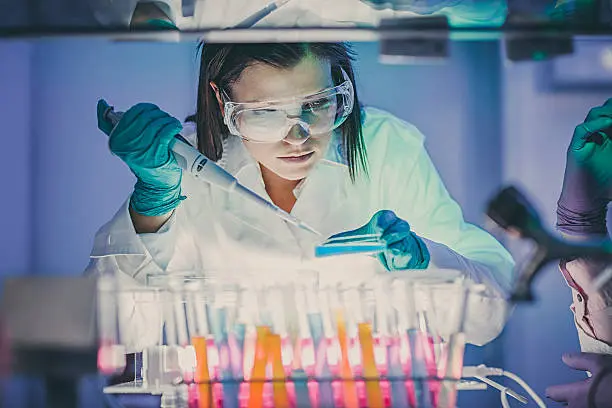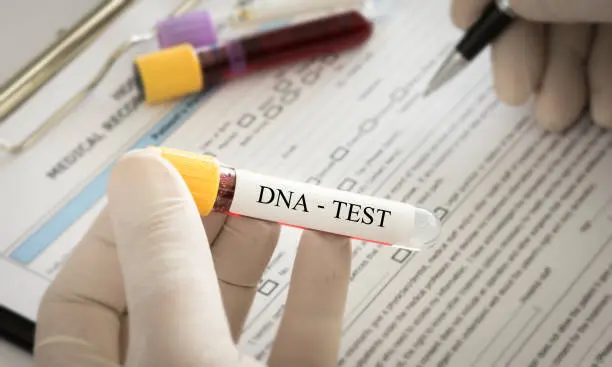The Stunning Effectiveness Of DNA Profiling

Any two people in the world have 99.9% of their DNA the same. It is the remaining 0.1% that individualizes us. This is the part of DNA that can be analyzed and used to link a criminal to a crime. This is called DNA profiling. The process needs only a tiny amount of skin cells, a hair root, blood, or saliva. From this sample, DNA is extracted.

In the early days of DNA analysis, a larger sample was required. Today, a single hair follicle or skin cell or drop of blood will suffice. DNA analysis in a crime lab involves several steps, each crucial for ensuring accurate and reliable results. Here is an overview of the typical process.
1. Collection of Samples
- Crime Scene: DNA samples are collected from the crime scene, which may include blood, saliva, hair, skin cells, or other biological materials.
- Reference Samples: Samples are also collected from known individuals for comparison, such as suspects or victims.
2. Sample Preparation
- Extraction: DNA is extracted from the cells in the collected samples. This process involves breaking open the cells to release the DNA.
- Quantification: The amount of DNA is measured to ensure there is enough for analysis.
- Purification: The DNA is purified to remove contaminants that might interfere with the analysis.
3. Polymerase Chain Reaction (PCR)
- Amplification: The extracted DNA is often present in very small quantities. PCR is used to amplify (make many copies of) specific regions of the DNA, making them easier to analyze.
4. Separation and Detection
- Electrophoresis: The amplified DNA fragments are separated by size using a technique called electrophoresis. This typically involves applying an electric field to a gel matrix, where smaller fragments move faster than larger ones.
- Detection: The separated DNA fragments are then visualized, often using fluorescent dyes that bind to the DNA.
5. Analysis of DNA Profiles
- STR Analysis: Short Tandem Repeat (STR) analysis is the most common method used in forensic DNA profiling. It focuses on specific areas of the DNA that are highly variable among individuals.
- Comparison: The DNA profile obtained from the crime scene sample is compared to the profiles from reference samples. A match can help identify the source of the DNA.
6. Interpretation and Reporting
- Statistical Analysis: The probability of a random match between the crime scene DNA and the reference sample is calculated.
- Report Generation: The results are compiled into a report, which includes the DNA profiles, statistical analysis, and the conclusions of the comparison.
- Quality Control: Throughout the process, various quality control measures are in place to ensure the accuracy and reliability of the results.
7. Presentation in Court
- Expert Testimony: Forensic scientists may present their findings in court, explaining the DNA analysis process and the significance of the results.
Each of these steps involves careful handling and analysis to ensure that the results are accurate and can be used reliably in a legal context.
Video 3:55
The time it takes for a crime lab to analyze DNA can vary significantly depending on several factors, including the complexity of the case, the type of analysis required, the backlog of cases at the lab, and the resources available. Generally, here are some typical timeframes:
- Routine Cases: For straightforward cases with a single, clear DNA sample, results can sometimes be obtained in a few days to a couple of weeks.
- Complex Cases: Cases that involve multiple samples, degraded DNA, or require more detailed analysis can take several weeks to a few months.
- High-Priority Cases: In urgent situations, such as ongoing investigations where rapid results are critical, labs might prioritize the analysis and produce results in as little as 24 to 72 hours.
- Backlogged Cases: If a crime lab has a significant backlog, it can delay analysis times considerably, sometimes taking several months to a year or more.

Welcome to 3-Minutes A Day University, where you can learn a little about a lot of things every day in three minutes or less. We help you expand your knowledge and understanding of the real world, and 3-MAD University is tuition-free. Our wide-ranging syllabus includes a fascinating insight into topics including Health and Medicine, Science, Sports, Geography, History, Culinary Arts, Finance and the Economy, Music and Entertainment, and dozens more. You will impress yourself, your friends, and your family with how easy it is to learn facts and perspectives about the world around you. One topic you will never find covered is politics. We hope you enjoyed the previous three minutes. If you liked this post, please pass it along to a friend.
Was this email forwarded to you? Subscribe Here.
© Copyright 2024. 3-Minutes A Day University All Rights Reserved. Unsubscribe

